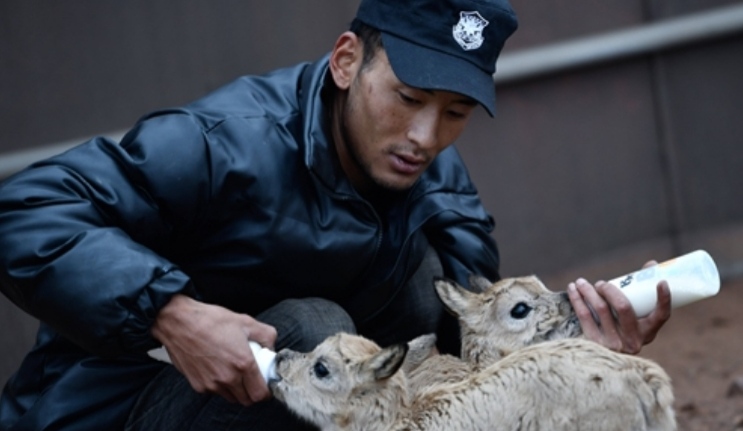Tibetan Antelopes Face Near Extinction Due To Chinese Hunting

Tibetan antelope calves rescued by patrollers from the Hoh Xil National Nature Reserve in Northwest China’s Qinghai Province on Wednesday. Photo: Snapshot of Sina Weibo
The number of Tibetan antelope in Tibet, once in abundance, have sharply decreased from nearly 600,000 to 20,000 due to illegal hunting a few years after the Chinese invasion. Then there was lots of protest by the Tibetans and finally conservation has gradually increased the numbers 300,000 in 2020. Apart from environmental conservation efforts a ban was imposed on hunting by both Chinese civilians and the PLA.
Most Tibetan antelope live in Qinghai, area of Tibet and Xinjiang Uygur Autonomous Region under China. The mating period is generally between the end of November and December, and then the female Tibetan antelope begin migrating to Zhuonai Lake where they give birth after May. Around August, mothers take their offspring back to their original habitats.
The mothers of 11 Tibetan antelope calves that were rescued on Wednesday by the Zhuonai Lake protection station at the world heritage site Hol Xil in Qinghai area may have been killed by wolves and bears during migration, a Tibetan animal expert said on Monday.
The 11 Tibetan antelope calves, rescued by patrollers from the Hoh Xil National Nature Reserve in Qinghai, are given milk three times a day, according to reports.
Tibetan antelope is a special deer-like species living on the Qinghai-Tibet Plateau that is given first-class protection now in Tibet against hunting by any one.
Wu Xiaomin, a research fellow at the Shaanxi Institute of Zoology and Northwest Institute of Endangered Zoological Species, said on Monday that these calves’ mothers may have been killed and eaten by some wolves or bears. He noted that they are currently being fed milk as they are usually unable to eat grass until they are at least two months old.
“Although the Tibetan antelopes migrate in herds, the adult Tibetan antelopes only take care of their own offspring. Those who lose their mothers are likely to die since no one will take care of them,” Wu said, adding that only 30 percent to 40 percent of them survive to maturity.
The station has transferred four of the calves to a wildlife rescue center belonging to the Sonam Dargye protection station in Qinghai, and the remaining are scheduled to follow soon, according to reports.
Wu said he is currently in Tibet to research the migration routes of Tibetan antelope, and hopes to find out the reason why these animals follow this routine every year. He noted that advanced technology including UAV detection, infrared cameras and satellite detection systems are used to track them.




